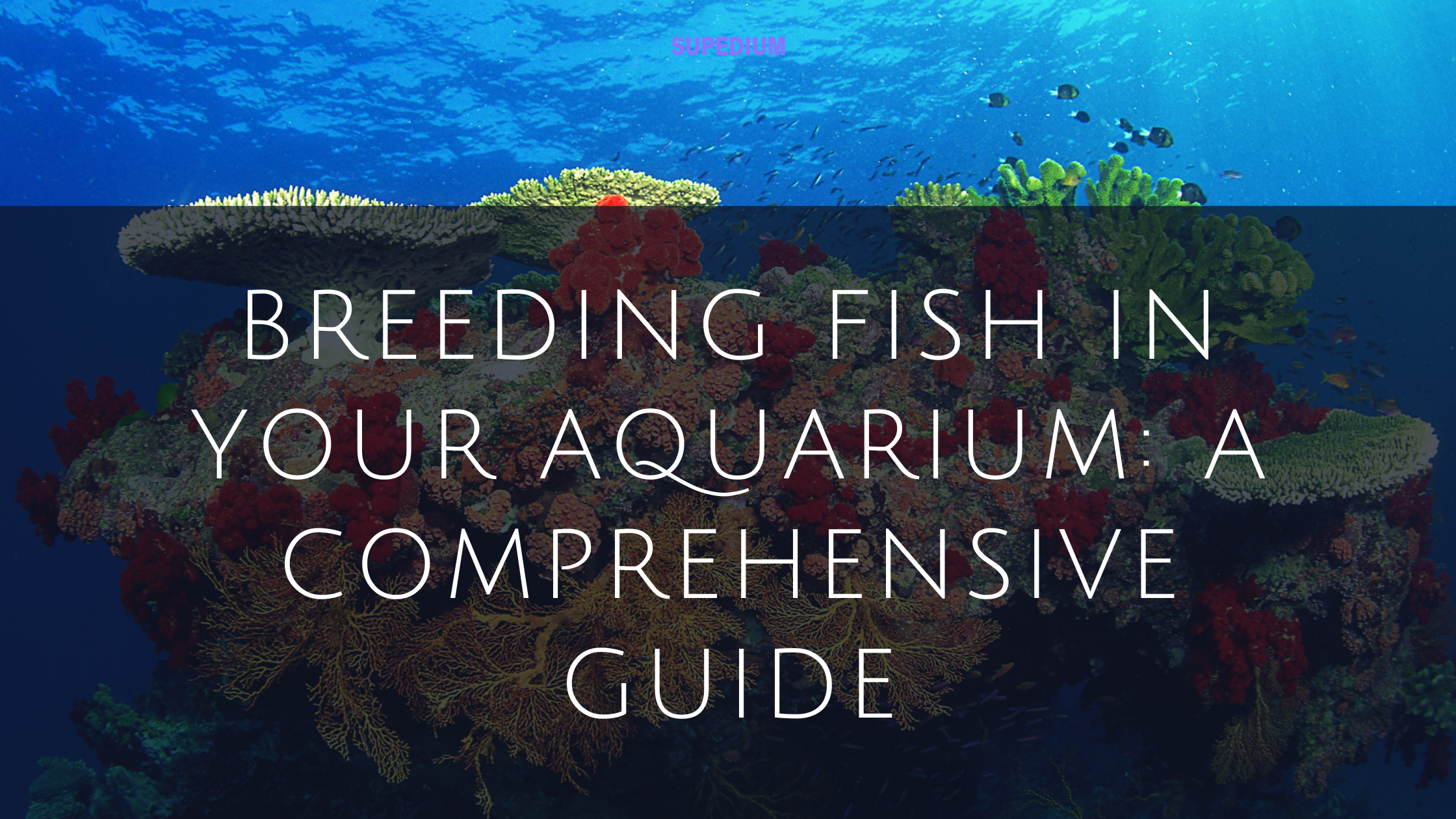Table of Contents
![]()
Breeding fish in your aquarium can be an exciting and rewarding experience. It offers insights into aquatic life, contributes to the health of your tank, and can even lead to new additions to your aquatic community. This article will guide you through the essential steps and considerations for successful fish breeding in your aquarium.
I. Introduction
Breeding fish involves understanding their natural reproductive behaviors and creating conditions that replicate their natural habitats. By breeding fish, you gain a deeper appreciation for their biology and contribute positively to the health and diversity of your aquarium.
II. Preparing for Breeding
A. Research and Planning
Before diving into fish breeding, it’s crucial to research the species you intend to breed. Different species have distinct breeding requirements and behaviors. Some fish are relatively easy to breed in captivity, while others may need more specialized care. Understanding these needs is essential for successful breeding.
B. Aquarium Setup
- Tank Size and Environment: The size of the aquarium plays a significant role in the breeding process. A larger tank can accommodate more fish and provides a more stable environment. Ensure the tank is properly cycled and stable before introducing breeding pairs.
- Water Quality and Parameters: Optimal water conditions are crucial for breeding. Different species have specific requirements for temperature, pH, and hardness. Invest in high-quality testing kits to monitor these parameters and make adjustments as needed.
- Essential Equipment: Ensure you have reliable equipment, including filters to maintain water quality, heaters to regulate temperature, and proper lighting to simulate day-night cycles.
C. Creating a Breeding-Friendly Environment
- Providing Hiding Spots and Spawning Areas: Fish often need places to hide and feel secure while spawning. Adding plants, rocks, or specialized breeding structures can create a suitable environment.
- Mimicking Natural Habitats: Replicate the natural environment of the fish as closely as possible. For instance, if breeding fish from river systems, consider using a current generator to mimic natural flow.
III. Identifying Breeding Behavior
A. Recognizing Mating Rituals
Observing mating rituals is key to successful breeding. Different species exhibit various courtship behaviors, such as intricate dances or color changes. Familiarize yourself with these behaviors to identify when fish are ready to breed.
B. Spawning Indicators
Watch for signs that indicate breeding readiness. For egg-layers, this might include changes in coloration or behavior, while livebearers may show signs of pregnancy. Understanding these indicators will help you prepare for the spawning process.
IV. Breeding Techniques
A. Egg-Laying Fish
- Species-Specific Methods: Egg-laying fish, such as cichlids and tetras, have unique spawning requirements. Research the specific needs of your chosen species, including their spawning substrate and incubation conditions.
- Incubating and Hatching Eggs: Once eggs are laid, they may need to be transferred to a separate hatching tank to protect them from potential threats. Maintain optimal water conditions and provide gentle aeration to ensure healthy development.
B. Livebearers
- Caring for Pregnant Fish: Livebearers, like guppies and mollies, give birth to live fry. Monitor pregnant females closely and provide a separate breeding tank if necessary to reduce stress and predation.
- Birth Process and Newborn Care: After birth, provide a calm environment for the fry. Offer finely crushed food or specialized fry food and ensure the tank conditions remain optimal for their growth.
V. Raising Fry
A. Providing Proper Nutrition
- Suitable Foods for Fry: Fry have specific dietary needs. Use finely ground foods or specialized fry food to ensure they receive the nutrients required for healthy growth.
- Feeding Frequency and Techniques: Feed fry multiple times a day in small amounts to avoid overfeeding and maintain water quality.
B. Maintaining Optimal Conditions
- Water Quality and Temperature: Regularly monitor and maintain water conditions to prevent disease and ensure healthy growth. Young fish are particularly sensitive to changes in water quality.
- Avoiding Diseases and Predators: Keep an eye out for common diseases and ensure that larger fish do not prey on the fry. Quarantine new additions to prevent disease outbreaks.
C. Growth and Development
- Monitoring Growth Stages: Track the development of fry to ensure they are growing at a healthy rate. Adjust feeding and tank conditions as they grow.
- Transitioning Fry: As fry grow, they may need to be moved to larger tanks to accommodate their increasing size and reduce stress.
VI. Common Challenges and Solutions
A. Dealing with Aggression
- Managing Aggression: Some fish species may become aggressive during breeding. Provide ample hiding spots and consider separating aggressive individuals if necessary.
- Separating Aggressive Individuals: If aggression becomes problematic, use separate tanks or breeding boxes to ensure the safety of all fish.
B. Preventing Disease
- Common Diseases: Fry and adult fish are susceptible to various diseases. Monitor for symptoms and maintain high water quality to reduce the risk.
- Prevention and Treatment: Regular water changes, proper nutrition, and quarantine protocols can help prevent disease outbreaks. Consult a veterinarian or fish health expert if needed.
C. Avoiding Overpopulation
- Managing Fry Populations: Overpopulation can lead to competition for resources and stress. Consider strategies like selective breeding or rehoming excess fish to manage populations effectively.
- Rehoming Options: If you have too many fish, explore options for rehoming them, such as local fish clubs, pet stores, or online communities.
VII. Ethical Considerations
A. Responsible Breeding Practices
- Ensuring Well-Being: Prioritize the health and well-being of your fish. Avoid breeding practices that could lead to deformities or health issues.
- Avoiding Overbreeding: Prevent overbreeding and inbreeding by managing breeding pairs and maintaining genetic diversity.
B. Impact on Ecosystem
- Effects on Ecosystems: Be aware of the potential impacts of breeding on local ecosystems, including the introduction of non-native species.
- Ethical Sourcing: Ensure that the fish and equipment you use are sourced ethically to minimize environmental impact.
VIII. Conclusion
Breeding fish in your aquarium requires careful planning, observation, and maintenance. By understanding the needs of your fish, providing a suitable environment, and addressing challenges, you can successfully breed and raise healthy fish. This not only enhances your aquarium experience but also contributes to a better understanding of aquatic life. For further learning, consider joining aquarium clubs or consulting with experienced breeders to expand your knowledge and skills.
Share This





Be the first to comment